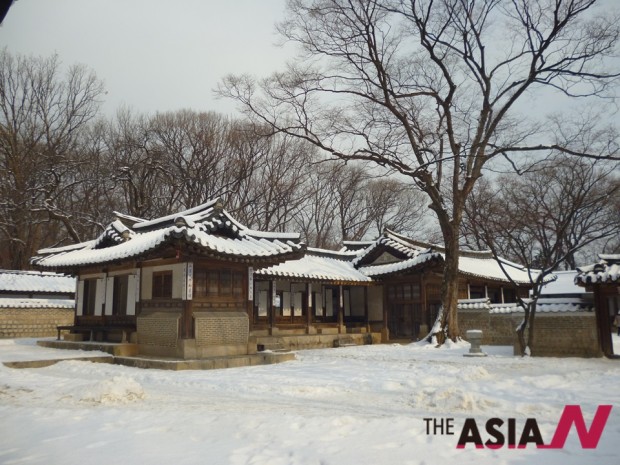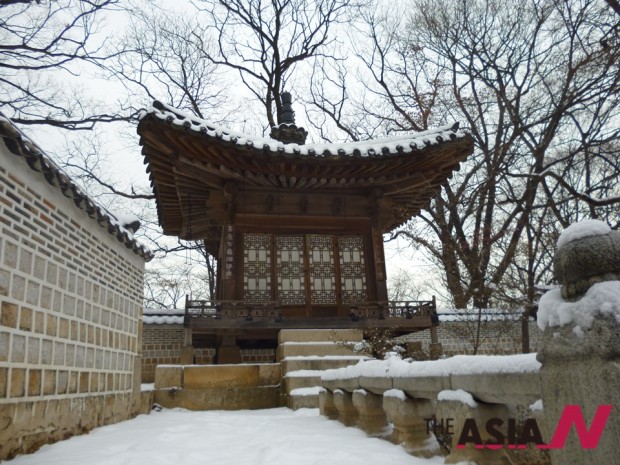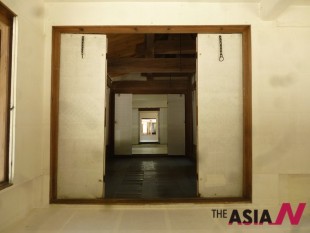Yeongyong Hall reflects Changes of Taste and Time
Yeongyeong Hall at the Secret Garden of Changdeok Palace is known as a 19th century noble house. Looking at the remains of the 19th century hanok structure that includes the anchae or main quarters, sarangchae or guest room and seonghyangjae or reading room among others, while location, meaning, direction, intersection and spaces between different and between the main and secondary buildings, architecture always becomes the first one that catches the eye. Being located at the east of the main Gyeongbok Palace, Changdeok and Changgyeong Palaces are referred to as the ‘East Palaces’. Yeonggyeong Hall is located in the garden of the ‘East Palace’ Changdeok, constructed at 11 o’clock position facing the north.
Located before entering Jangrakmun, the main entrance, the west side of the bridge with a stream running below it is a mortar-shaped stone. Serving as the four legs of the stone mortar are four toads, where one is creeping out while the other three are not. While there are various explanations to this, the most recognized explanation is that the toads show the change between calmness and confusion in their action. ‘Jangrak’, the name of the main entrance of Yeonggyeong Hall, comes from the book ‘Perpetual Happiness’ (Jangkugweirak), which serves as the meaning of the name of the door itself. ‘Janggu’ was written by the Chinese scholar Su Shi (1037-1101) while thinking of his brother, Su Zhe (1039-1112). It has the same meaning with Changle Palace (later changed into the Yongle Palace) of the Eastern Han Dynasty.
The Yeongyeong Hall has a different arrangement of buildings inside the palace, as well as those outside. Passing the main gate Jangrakmun, across the servants’ quarters, the ‘Suinmun’ in the west leads to the inner yard and inner rooms, and the ‘Changyangmun’ in the east will lead to the men’s quarters.
Going inside the Yeongyeong Hall, the total area was designated as the men’s quarters. The hall was designated as the 1770th national treasure of Korea last August 2012. In Yeongyeong Hall, the anchae or main quarters are located in the west and the sarangchae or guest room are located in the east. As the number of palanquins entering the hall decrease, Suinmun has been shaped evenly and lowly, allowing only people to come through. For palanquins such as the tall monowheel chair called choheon, ‘Changyangmun’ was constructed higher leading to the yard of the men’s quarters. The main hall was constructed with a heated flooring plan, known more as ondol, and the upper floor was constructed with 10 ‘khans’, or spaces, present in architectural plans of palaces or Buddhist temples. Khans are indicated by pillars, where every khan has a pillar in royal palaces while regular households have one in every four khans. Cho In-suk Architect | Summary by Rigoberto Banta Jr.



























































